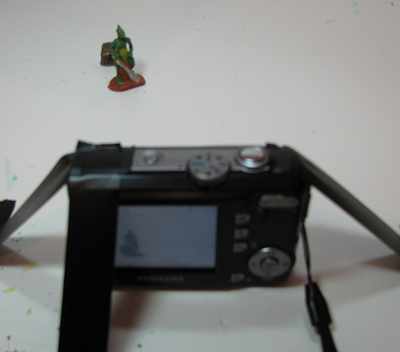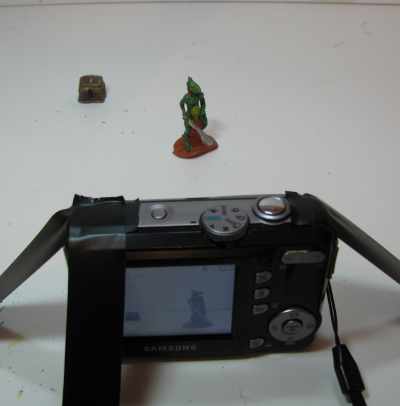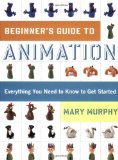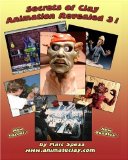The beautiful thing about animation is the limitless creativity. You can do it with very few tools or materials. What you do need is some patience and some ideas.
What is Animation?
The term "Animation" gives us a clue as to what it is all about. Pretty much it is bringing something to life, making it move or animating it! That sounds a bit simplistic but it makes perfect sense and believe it or not even movies can be considered animations because they bring a series of pictures to life.
A series of pictures
Yes, an animation is a series of pictures strung together and played in rapid succession so they fool the human eye. If pictures are shown in rapid enough succession your brain stitches them together and interprets them as fluid motion. If you take a look at the picture below you can see that the tank is moving across the screen from picture to picture. I took the first picture with the tank on the left of the screen. I then moved the tank forward just a little bit and took the next picture. So, these are all simply individual pictures but when they are played on the screen in rapid succession the eye and brain are fooled into seeing it as smooth motion. (These tank photos are part of my WW2 Diorama Animation tutorial)

What you need to make an animation
- A Camera
- A computer with some software on it
- Some materials that you will animate, this could just be paper and pencil or any number of materials like clay, pipe cleaners or even just yourself.
So Basically What you do is to create a series of images where something or somethings have moved and then you show these pictures in rapid succession. That's pretty much it, that is how you make an animation!
So, Let's get to the actual how to of making an animation!!
 A couple of important things before we start. A couple of important things before we start.
- You have to keep your camera absolutely still when taking all the pictures. This is how you will achieve the sense of reality. So, use a tripod if you have one and if you don't then tape the camera down in a way that you can still press the button to take pictures!
- You need bright lighting - brighter than you think you need. When stitching the pictures together into an animation you will lose some of the brightness of each picture so I recommend you get a lamp and place it near your worksurface to brighten things up.

This picture shows us a very basic set up to start making an animation. I taped a camera right down to the work surface and I have added the extra light (maginfying light). The shutter button on the camera is of course free so we can push the button and snap a picture. I have created a little working area out of cardboard and white posterboard but you really don't need to do this. You can just use a table top.
Remember that this camera angle is ground level so if you want your camera to be higher off the surface you should tape it to something like the top of a stack of books.
Now all we have to do is place our object or objects on the surface and take a picture.
Then move the object(s) a small amount and take another picture.
That is the whole process of making the animation. It is easily done.

Place your figure or miniature on your work surface so it is on the left. Notice how we can see it in the camera. Remove your hand then snap a picture.
In this picture there is a little treasure chest exactly behind the Lizard Warrior. We can't see it yet.
Now grab the miniature and move it just a little bit to the right. Maybe about one half of an inch.
And snap another picture.
 Note from Will: The lizard and the treasure chest are actual projects that I have done. I have complete tutorials that show you how to sculpt the lizard and the chest and how to make duplicates in rubber molds. Check out those tutorials in my miniature section Note from Will: The lizard and the treasure chest are actual projects that I have done. I have complete tutorials that show you how to sculpt the lizard and the chest and how to make duplicates in rubber molds. Check out those tutorials in my miniature section

You can see in this picture I have moved the miniature a little bit to the right. the chest in back of the lizard is now visible.
Continue doing this process. Move the miniature a half inch then snap a picture, and do it again, move the mini and snap a picture!

For this beginners animation we are making try to keep moving the figure around for at least 60 pictures. And that will only be about five seconds worth of animation! but it will be enough to give you an idea of how an animation is made.
If you have the patience then do more - keep moving it and take more pictures. And add more objects if you want it to be more complex and more interesting to look at.
Smoothing out your animation
So how does 60 pictures come out to be 5 seconds of video?
This is an important question and you need to understand why this ratio is what we are trying to achieve.
Remember how we talked about animation simply being a way to fool the eye and the brain? Well, We are flipping throug pictures at a fast rate and there are some standards for this. For example, 12 pictures (also called frames) in one second is typically considered the absolute easiest frame rate to get a reasonably good animation. It will be a little bit choppy because at this slow frame rate your eye will pick up on the different pictures.
But as a first animation we choose 12 frames per second just so you can get it done faster and easier.
If you want your animation to be even smoother then you take more pictures per second, some typical standards are 15, 24 and 30. But you have to remember that you have to also move your little figure in slower increments! To get the lizard to walk across the screen at the same regular old walking speed we now move him only a quarter of an inch and we take 24 pictures to get a seconds worth of video! These smaller motions and faster picture rates will give a much smoother animation. But, now instead of taking 60 pictures to get five seconds of video we now have to take 120 pictures to get five seconds of video.
We Have made all the pictures and now we need to make the actual animation! How do we do that?
This is done with the computer! And it is actually pretty easy to do. There are a lot of different programs that can do this and maybe you already have one. But one common program is called Windows Movie Maker and you probably already have it loaded on your computer. It comes standard with a lot of Microsoft Software.
You cna continue on with this tutorial on how to make an animation. And note that I don't use the little lizard man and treasure chest for this second half. I use a chess set. But it really doesn't matter to you. Your pictures will be whatever you use. This next part is easy and you will have your animation completed in a very short period of time!
 Continue on with this tutorial Continue on with this tutorial
RESOURCES TO MAKING STOP MOTION ANIMATION
 
Beginner's Guide to Animation: Everything You Need to Know to Get Started
To beginners, making an animated movie can seem like voodoo magic. And in fact, until recently, animation was expensive and time-consuming. But now with the help of Beginner's Guide to Animation, anyone can make animated movies, using a digital camera, basic software, and a computer. The book begins with an illustrated guide to setting up a simple animation studio at home, including a list of essential items. Then, new animators hit the ground running with six innovative, instructive projects designed to develop technical skills and explore the potential of animation. A full collection of scannable templates makes it even easier to get started and to finish up. Tips, tricks, and clear instructions on editing, scoring, even making your own show reels and shorts make this the complete one-volume guide to amazing friends and family-and everyone on YouTube!-with great I-made-it-myself animation.
 
The Klutz Book of Animation: Make Your Own Stop Motion Movies
Welcome to the wide-open world of animation. It used to take an empire the size of the Magic Kingdom to make an animated film. And to get viewers, you'd need access to cineplexes or television networks. In other words, you were either in the industry or in the audience. That was then. Today, creating animation for a potential audience of 600 million requires a laptop, a camera, and an internet connection. That's it. The barriers have come down, the people have taken over, and the results are amazing. The Klutz Book of Animation is a complete how-to treatment of this newly accessible art form. It combines practical instruction and ready-to-shoot scripts. Real-life samples of all the projects are viewable online - the perfect marriage of book and web. Speaking of web, the software you'll need is available as a free download. It's plug and play on any computer (PC or Mac). Attached to the book is a piece of low-tech, non-toxic clay, ready to be molded into a million different heroes starring in a million different films - all of them animatedly yours.
 
Secrets Of Clay Animation Revealed 3!
Secrets of Clay Animation Revealed 3 is a book teaching all methods the experts use to make stop motion films from start to finish. After reading Secrets you will know how to create several types of armatures, learn how puppets are sculpted, make a motion control rig, light your sets, make your own surface gages, use video reference, chroma key, capture programs and more.
 
Stop Motion: Craft Skills for Model Animation, Second Edition (Focal Press Visual Effects and Animation)
This authoritative primer of the craft skills required in model animation teaches the basic building blocks of the creation of character driven animation.

Do you like making projects and exploring a variety of hobbies?
Sign up for my free newsletter. I give you regular updates on hobbies and projects you can make. it is totally free and I don't share your email with anybody.
|

![]()






 Note from Will: The lizard and the treasure chest are actual projects that I have done. I have complete tutorials that show you how to sculpt the lizard and the chest and how to make duplicates in rubber molds.
Note from Will: The lizard and the treasure chest are actual projects that I have done. I have complete tutorials that show you how to sculpt the lizard and the chest and how to make duplicates in rubber molds. 





